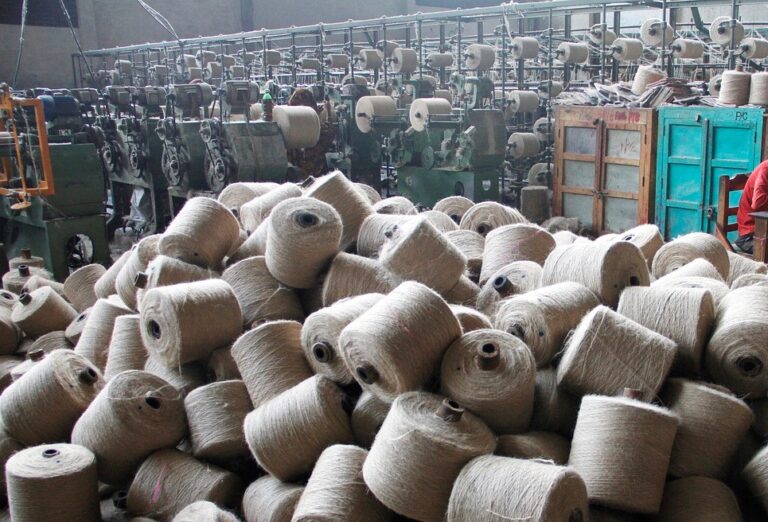Fast fashion has been a common practice in the apparel industry for many years, but its impacts are starting to take their toll. Fast fashion’s environmental and social impacts have become increasingly concerning as economic costs continue to rise while wages remain low and resources are wasted.
Ultimately, it is up to consumers and fashion companies to find sustainable solutions that will help reduce the negative impacts of fast fashion. By changing production practices, improving worker conditions, and becoming more mindful consumers, we can create a more sustainable future for this industry.
Table of Contents
What is the fast fashion industry?
Fast fashion is an approach to clothing design, creation, and marketing. It is driven by trends in the fashion industry and aimed at quickly delivering affordable apparel to consumers.
Fast fashion allows for a more rapid cycle of production, with new designs hitting stores every week or even daily. This quick turnaround helps fast fashion brands keep up with the latest trends and keep shoppers interested.
These brands often use lower-quality fabrics and less expensive labor than traditional clothing manufacturers, which enables them to offer their goods for less. As a result, fast trend has become increasingly popular among consumers looking for quick, affordable ways to stay fashionable.
Fast fashion has had a huge impact on the world of fashion, showing no signs of slowing down. It’s hard to deny the positive aspects of fast fashion – it offers consumers more affordable clothing options, greater variety, and quicker access to trends than ever before. However, the negative aspects of fast fashion also need to be addressed.
The economic impact of fast fashion
1. High production costs
One of the biggest economic issues with fast fashion is the high production costs. This is also associated with producing millions of garments in a short amount of time.
This includes labor costs, materials, machinery, energy used to create each garment, and transportation costs if the garments are produced overseas. All these costs lead to higher consumer prices, which can be difficult for many people to afford.
2. Low prices for customers
Despite the high production costs associated with creating fast fashion garments, retailers often keep the prices low in order to appeal to a wider audience. This means that while the production costs are higher, the prices for consumers remain low.
However, this can be a double-edged sword because while the prices may be attractive to customers who want affordable trend, it also means that producers are unable to make a profit and stay in business in the long run.
3. Unsustainable business models
The low prices of fast fashion garments mean that retailers are often unable to make a profit, leading to unsustainable business models. This can have significant economic consequences, as it means that producers may be forced out of business or to pay their workers lower wages.
Additionally, due to the high production costs associated with fast fashion and the fact that the garments are often from lower-quality materials, they don’t last as long and need to be replaced more frequently.
This can lead to overconsumption and increased waste, which is bad for the environment and puts a strain on economic resources.
Social impact of fast fashion
The global economy is significantly influenced by the fashion sector, employing an estimated 75 million people. Unfortunately, many of those people are working in exploitative and unsafe conditions.
This trend has been linked to unethical labor practices such as low pay, and lengthy hours. Apart from that, it offers uncertainty about job security and dangerous working conditions.
Additionally, fast trend brands often outsource production to developing countries. This shows that the workers can often not access basic rights such as union representation and collective bargaining.
Environmental impact of fast fashion
Fast fashion has become increasingly popular over the past few decades, but its production can significantly impact the environment. Fast fashion garments are usually made with synthetic materials like polyester and nylon that use large amounts of energy to manufacture. This energy often comes from non-renewable sources such as coal or petrol, which releases nocive greenhouse gases into the atmosphere.
The production of synthetic fibers also generates large amounts of waste and water pollution. Fast trend companies often employ unethical labor practices, exploiting and exposing workers in developing countries to dangerous chemicals.
Additionally, due to the disposable nature of fast fashion, much of it ends up polluting landfills and oceans, impacting our environment for years to come. This industry is taking steps to reduce its environmental impact. It’s still essential for consumers to be mindful of their purchases and strive for more sustainable options whenever possible.
Fast fashion is contributing to a wide range of environmental issues, such as air and water pollution, and excessive waste. It’s time to find solutions that help protect the planet from being overrun with textile waste. According to some estimates, up to 10% of worldwide carbon emissions are attributable to this business.
The solution to the fast fashion industry
One solution is reducing consumption by choosing fewer but more quality garments. Shopping for clothes with longer life spans means buying items that are more sustainable and of better quality. This reduces the amount of clothing ending up in landfills and cuts down on energy used for production.
Another way to reduce the damage caused by fast trends is by extending the use of existing garments. People can extend the lives of their clothes through patching, mending, repairing, and upcycling.
Finally, people can reduce their environmental impact by supporting ethical fashion brands. These are making an effort to be more sustainable and eco-friendly in their production processes. These companies often use organic materials, renewable energy sources, and ethical practices. It ensures that their clothes are better for the planet.
Read also: Zero waste movement: what is it and how to apply it












